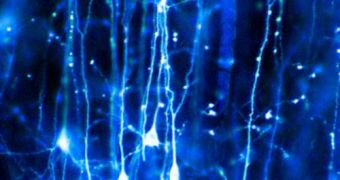One of the things neurobiologists know about the human brain is that it's incredibly flexible. This ability is crucial for our race's superior cognitive capabilities, but it also represents one of the most mysterious aspects of the human brain. Scientists are still unable to explain why the newborn brain is so flexible, and why it changes so easily. One explanation is that the babies need to learn, therefore they have to literally keep an open mind. But a new study proposes another, more interesting reason.
The work was carried out by an international team of experts, featuring scientists from the Max Planck Institute for Dynamics and Self-Organization in Gottingen, the Schiller University in Jena, Germany, and the Princeton University, in the United States. The group argues that the reason why neural connections can be so easily broken and then retied at an early age is because the brain still has to grow. Their idea is detailed in the June 21 issue of the esteemed publication Proceedings of the National Academy of Sciences (PNAS), AlphaGalileo reports.
“This is an enormous achievement by the brain – undertaking such a restructuring while continuing to function. There is no engineer behind this conducting the planning, the process must generate itself,” MPI expert Wolfgang Keil, who has also been the lead author of the PNAS paper, explains. The new conclusions were reached by employing a combination of experiments, mathematical models and computer simulations, as well as animal models. The visual cortices of cats were primarily used for the work, given their similarity to the newborn brain.
The basic conclusion of the investigation is that the cortex appears to be capable of maintaining its function undisturbed, even as its neural connections are restructured. This is an extremely useful ability, as it allows us to continue learning, and retain our knowledge, as the brain increases its processing capacity and learning ability. The researchers propose that self-organizational processes are at work during this restructuring, which allows the brain to remain capable of cognitive functions while undergoing massive changes.

 14 DAY TRIAL //
14 DAY TRIAL //